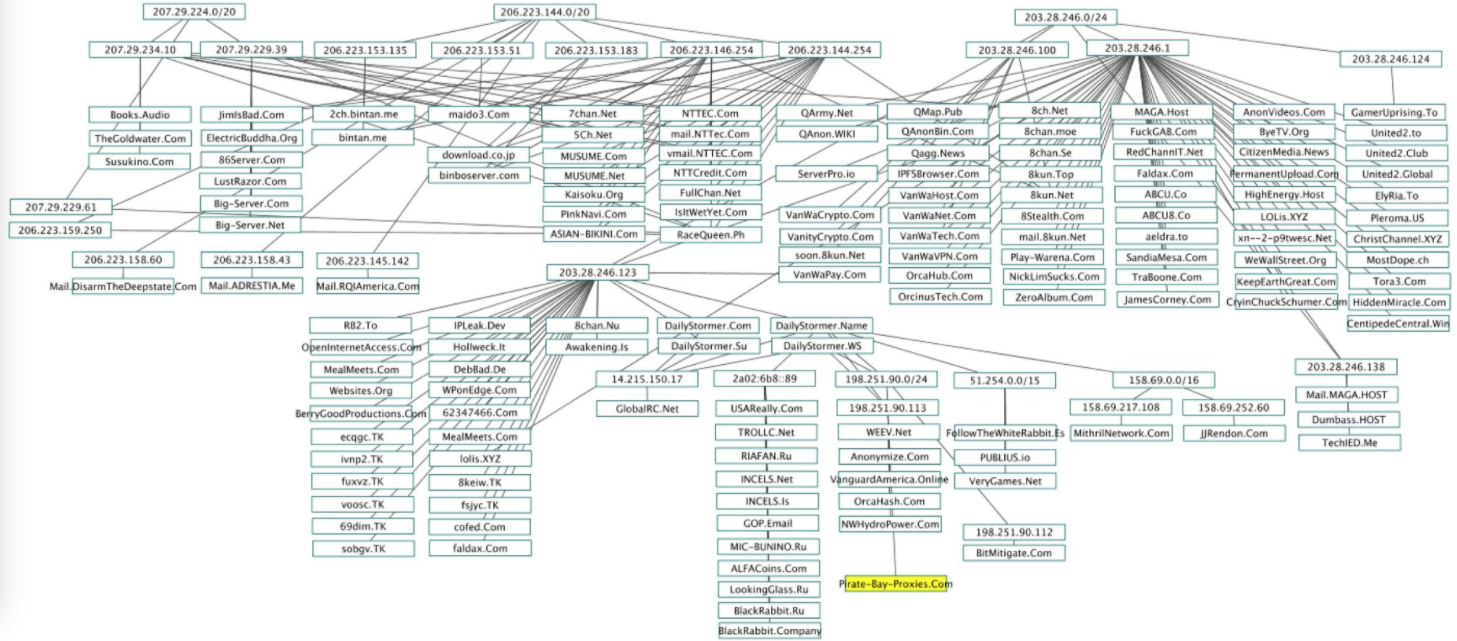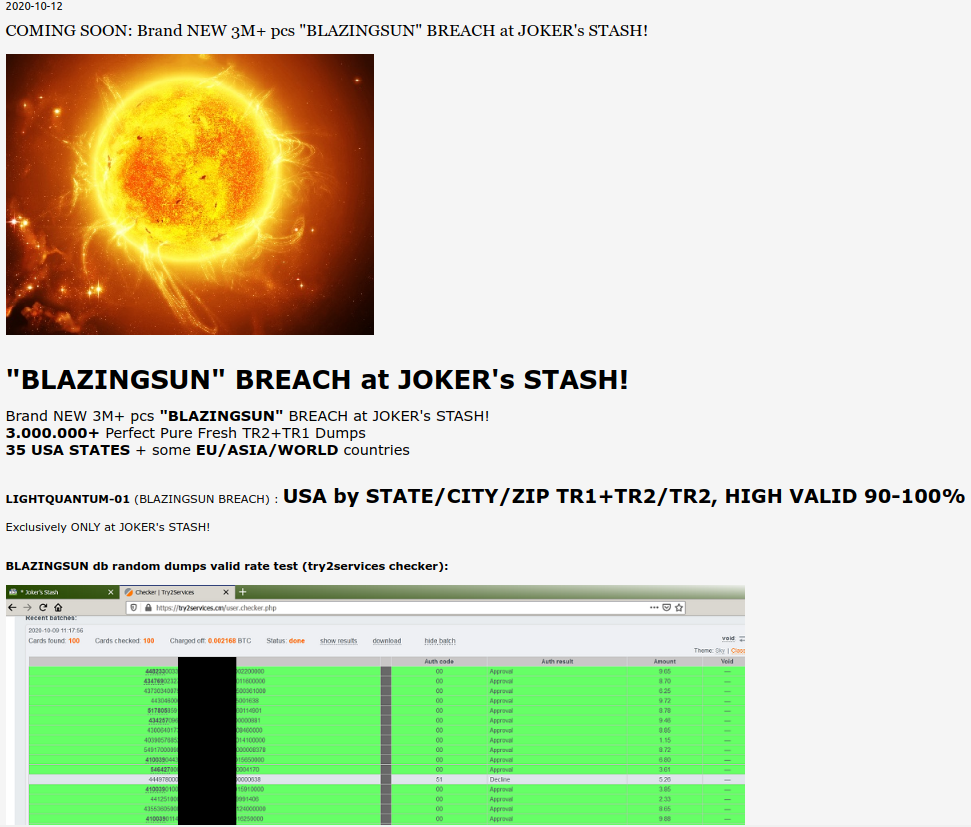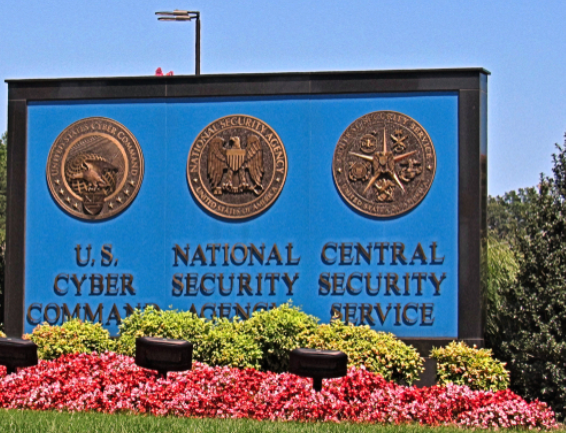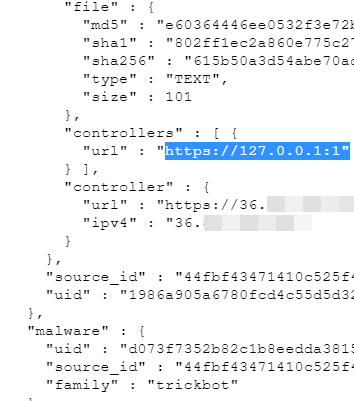A phone call to an Internet provider in Oregon on Sunday evening was all it took to briefly sideline multiple websites related to 8chan/8kun — a controversial online image board linked to several mass shootings — and QAnon, the far-right conspiracy theory which holds that a cabal of Satanic pedophiles is running a global child sex-trafficking ring and plotting against President Donald Trump. Following a brief disruption, the sites have come back online with the help of an Internet company based in St. Petersburg, Russia.

The IP address range in the upper-right portion of this map of QAnon and 8kun-related sites — 203.28.246.0/24 — is assigned to VanwaTech and briefly went offline this evening. Source: twitter.com/Redrum_of_Crows.
A large number of 8kun and QAnon-related sites (see map above) are connected to the Web via a single Internet provider in Vancouver, Wash. called VanwaTech (a.k.a. “OrcaTech“). Previous appeals to VanwaTech to disconnect these sites have fallen on deaf ears, as the company’s owner Nick Lim reportedly has been working with 8kun’s administrators to keep the sites online in the name of protecting free speech.
But VanwaTech also had a single point of failure on its end: The swath of Internet addresses serving the various 8kun/QAnon sites were being protected from otherwise crippling and incessant distributed-denial-of-service (DDoS) attacks by Hillsboro, Ore. based CNServers LLC.
On Sunday evening, security researcher Ron Guilmette placed a phone call to CNServers’ owner, who professed to be shocked by revelations that his company was helping QAnon and 8kun keep the lights on.
Within minutes of that call, CNServers told its customer — Spartan Host Ltd., which is registered in Belfast, Northern Ireland — that it would no longer be providing DDoS protection for the set of 254 Internet addresses that Spartan Host was routing on behalf of VanwaTech.
Contacted by KrebsOnSecurity, the person who answered the phone at CNServers asked not to be named in this story for fear of possible reprisals from the 8kun/QAnon crowd. But they confirmed that CNServers had indeed terminated its service with Spartan Host. That person added they weren’t a fan of either 8kun or QAnon, and said they would not self-describe as a Trump supporter.
CNServers said that shortly after it withdrew its DDoS protection services, Spartan Host changed its settings so that VanwaTech’s Internet addresses were protected from attacks by ddos-guard[.]net, a company based in St. Petersburg, Russia.
Spartan Host’s founder, 25-year-old Ryan McCully, confirmed CNServers’ report. McCully declined to say for how long VanwaTech had been a customer, or whether Spartan Host had experienced any attacks as a result of CNServers’ action. Continue reading
















